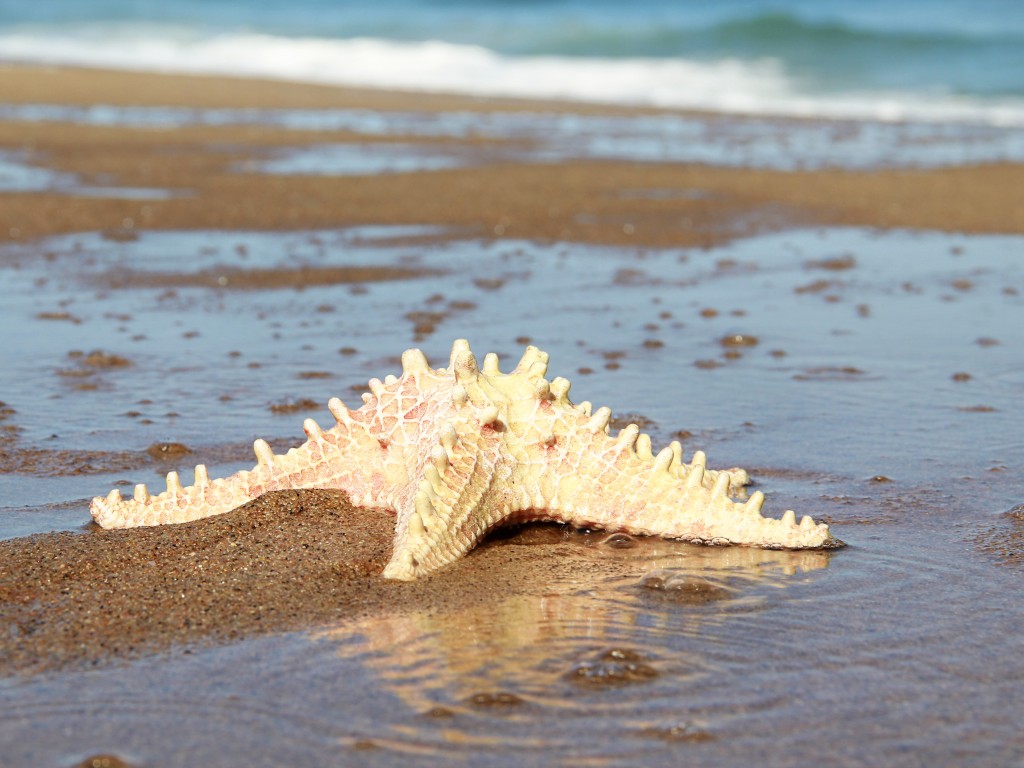By Christina Albright-Mundy
I’d heard reports that something was not quite right with a portion of the starfish population in Monterey Bay, California. It was rumored that the starfish were ill; that something was eating away at their limbs, leaving them disfigured or dead. On a recent trip to San Carlos Beach, I saw the phenomenon for myself, which prompted further research. What I learned was far worse than I could have imagined — the starfish were melting.
Scientists call this illness ‘starfish wasting disease,’ and have identified diseased starfish along thousands of miles of the U.S. West Coast, from northern Alaska to Southern California. Previously, this illness was isolated to a relatively small area, but this time is different. Now, patches of affected areas are interspersed with unaffected areas. Millions of starfish have fallen victim. Past events involved only one species during each outbreak; the current event involves 12 different species.
One of the first people to realize there was a problem was professor Allison Gong, an associate research biologist at UC-Santa Cruz’s Long Marine Laboratory and a biology professor at CSU Monterey Bay. Professor Gong keeps starfish in her classroom and, beginning in the fall of 2013, she noticed her starfish were beginning to cannibalize each other; starfish do not cannibalize healthy starfish. White lesions quickly appeared on the infected starfish, progressing to limb loss within days. The starfish’s body then seemed to melt away.
Hypothesized causes of the illness include reduced oxygen levels, ocean acidification, ocean warming, bacterial infection and nuclear radiation from Fukushima. In support of the warming-water hypothesis, some researchers have reported success at keeping the disease from advancing by placing infected animals in cooler water. The reported number of sick animals is also greater in the summer.
Initial reports had the disease affecting starfish populations in Alaska, British Columbia, Washington, Oregon and Northern California, with the first identified case in Washington in June 2013. Soon after, reports of infected starfish as far south as Santa Barbara began coming in. By February, there were reports of the illness in San Diego, the Mediterranean and the North Atlantic coast of North America. With the spread of the disease affecting areas other than the Pacific coastline, it seemed unlikely that Fukushima was the cause. Researchers were also able to rule out ocean acidification and low oxygen levels, as other organisms would have been affected. An infection, whether viral, parasitic or bacterial, seemed to be the most likely culprit.
Interestingly, researchers identified more infected starfish in protected waters and aquariums than in the open ocean. There is speculation that the constant stirring of the water by wave action could be a factor in the spread of the disease.
Whatever the cause of this disease, corrective action is needed immediately. Starfish have an important ecological niche in tidal communities, controlling a mussel population that, without starfish predation, will crowd out other tide-pool inhabitants. The more starfish die, the greater the impact on coastal ecosystems.
Researchers need help from divers, who make excellent citizen-scientists when it comes to infected starfish data collection. If you identify a sick starfish, UCSC is actively collecting data and requests notification of these sightings via their website.
http://www.eeb.ucsc.edu/pacificrockyintertidal/data-products/sea-star-wasting/


